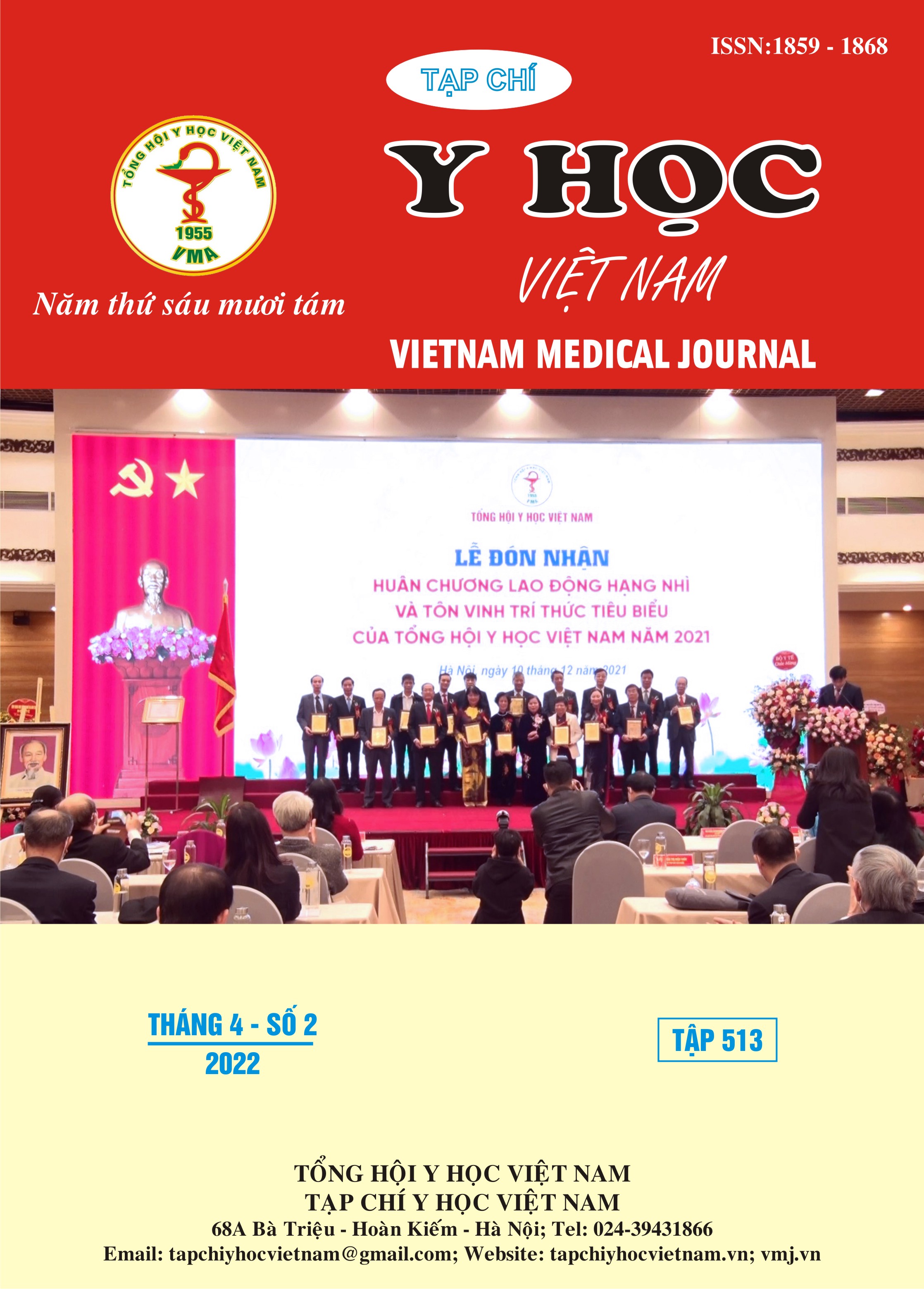RESULTS OF CATHETERIZATION FOR CONTINUOUS AMBULATORY PERITONEAL DIALYSIS FROM 2014 TO 2016 AT BACH MAI HOSPITAL
Nội dung chính của bài viết
Tóm tắt
Purpose: To evaluate laparoscopic and open surgical procedures for the insertion of peritoneal dialysis catheters in patients with end-stage renal disease. Material and methods: A retrospective study on the patients of end-stage renal disease undergoing catheterization at Bach Mai hospital from June 2014 to May 2016. Patients were divided into two groups: the open technique (OT) group and the laparoscopic preperitoneal tunneling approach (LA) group. Results: Seventy-two patients were enrolled in the study. Peritoneal dialysis catheters were placed into 41 patients via the LA and 31 via the OT. Twelve patients (16.7%) had previous abdominal surgery. Major omentectomy was performed in seven patients (9.7%). One hundred percent of patients in the LA group had the great omentum fixed. The mean operational time in the LA and OT groups was 52.2 minutes (range, 15-105) and 35.08 minutes (range, 20-62), respectively. Blood biochemical and hematological parameters were significantly different after 3 months in both groups compared to before surgery. Although the LA group showed fewer short-term complications than the OT group (14.6% vs 48.4%), the two groups had similar long-term complications. After one and two years, the overall outcomes of the LA group outperformed those of the OT group. Conclusion: Catheterization for continuous ambulatory peritoneal dialysis is a viable, safe, and successful approach. The laparoscopic approach to preperitoneal tunneling is better than the open procedure in terms of the overall outcome.
Chi tiết bài viết
Từ khóa
Peritoneal dialysis, end-stage renal disease, surgery, catheter
Tài liệu tham khảo
2. Dương Quang Vũ, Thái Minh Sâm, Châu Quí Thuận và cs. Nghiên cứu hiệu quả của phẫu thuật nội soi tối thiểu đặt ống thông Tenckhoff, Y Học TP. Hồ Chí Minh. Tập 18, Phụ bản của Số 4, 2014, 202-208.
3. Tiong HY, Poh J., Sunderaraj K. et al. Surgical complications of Tenckhoff catheters used in continuous ambulatory peritoneal dialysis. Singapore Medical Journal 47(8):707-11.
4. Brican HY et Kulah E. Effects of a Novel Peritoneal Dialysis: The Open Versus Laparoscopic Preperitoneal Tunneling Technique. Therapeutic Apheresis and Dialysis 2016; 20(1):66–72. DOI: 10.1111/1744-9987.12377
5. Ferreira AC, Santos J, Amoedo M. et al. Current guidelines in peritoneal dialysis – Part I. Port J Nephrol Hypert 2019; 33(1): 28-35.
6. Jwo SC, Chen KS, Lee CC. Et al. Prospective Randomized Study for Comparison of Open Surgery with Laparoscopic-Assisted Placement of Tenckhoff Peritoneal Dialysis Catheter—A Single-Center Experience and Literature Review. Journal of Surgical Research 2010, 159, 489–496. doi:10.1016/j.jss.2008.09.008.
7. Phạm văn Bùi. Cắt mạc nối lớn thường quy nhằm phòng ngừa tắc catheter làm thẩm phân phúc mạc. Y Học TP. Hồ Chí Minh. 2010, 14(3), 20-27.
8. Miftah M, Asseban M, Bezzaz A. et al. Mechanical Complications of Peritoneal Dialysis. Open Journal of Nephrology, 2014, 4, 103-109. doi.org/10.4236/ojneph.2014.43015.


